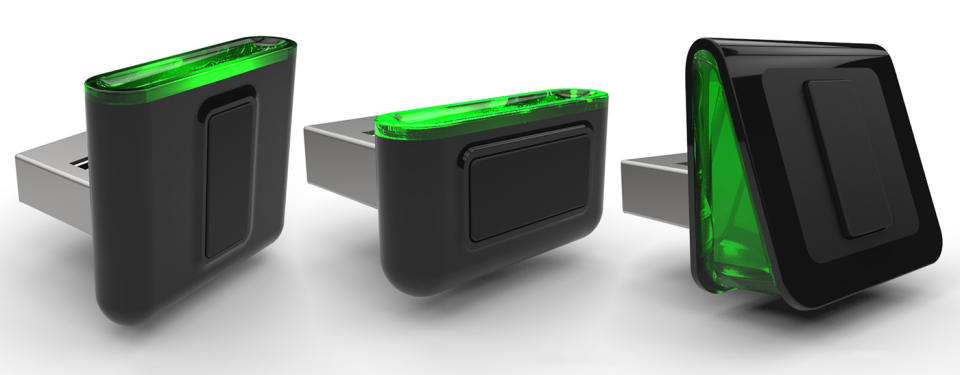Synaptics' under-glass fingerprint reader is almost here
Future laptops and smartphones will get a cleaner look thanks to this technology.

It was just a month ago when LG Innotek unveiled its under-glass fingerprint sensor, but it's clearly not the only company working on this space. At Computex, the folks over at Synaptics were kind enough to let me take a sneak peek at a similar technology that they've been working on for two years. For some reason, photography was forbidden, but the prototype was simply a special glass trackpad -- with extra details which I am not at liberty to disclose -- retrofitted into an existing laptop. It'll essentially be a spiritual successor to Synaptics' SecurePad (pictured above), but rather than having to cut a hole through the trackpad, the next-gen fingerprint sensor will simply sit underneath the glass layer, so that when it's idle, you can still use the entire trackpad area for the usual cursor and gesture controls.
The company reps wouldn't give a timeline here, but based on the prototype's responsiveness when I tried it, I have a feeling that it'll be made available to OEMs soon. And as you'd expect, the same technology can be applied to smartphones -- Synaptics is the supplier behind the fingerprint readers on Samsung's flagship smartphones, after all. The company reps added that this will be ready for Windows Hello.
"I don't see laptops shipping without fingerprint reader in three years' time."
According to Vice President of Marketing Godfrey Cheng, Synaptics is shipping over 100 million trackpads a year these days, which explains why his company is working hard on refining the fingerprint-on-trackpad integration. "I don't see laptops shipping without fingerprint reader in three years' time. People are transitioning aggressively, probably more so on the consumer side than the business side," Cheng added. For the same reasons, Synaptics has been bolstering its fingerprint anti-spoofing technology to stay ahead of the curve: The demo I saw was able to differentiate between a real finger and its wood glue copy after a new algorithm was enabled.

Despite its increased effort in pushing integrated fingerprint readers, Synaptics is actually also looking into bringing back the fingerprint USB module, but in a much smaller form factor -- so much that it can just stay in the USB port without getting in your way. Starting in Q3, the company will be sampling its small, fully-housed IronVeil "Catalyst" fingerprint module turnkey solution (featuring the same rectangular sensor made for modern mobile devices), followed by mass-production in Q4. It'd only cost OEMs less than $40 a pop, plus the device will also be compatible with Windows Hello, so they'll only have to worry about the packaging, branding and marketing costs.

Perhaps what's more readily available is the Tt eSports Black FP gaming mouse, which we first saw back at last year's Computex and is now finally prepping for retail launch. The mouse features a Synaptics IronVeil fingerprint sensor on where your right thumb would rest, so you'll only need to register one finger here. As for the actual mouse itself, it's powered by a 5700 dpi laser sensor and features seven programmable buttons. Alas, there's no pricing info just yet.

